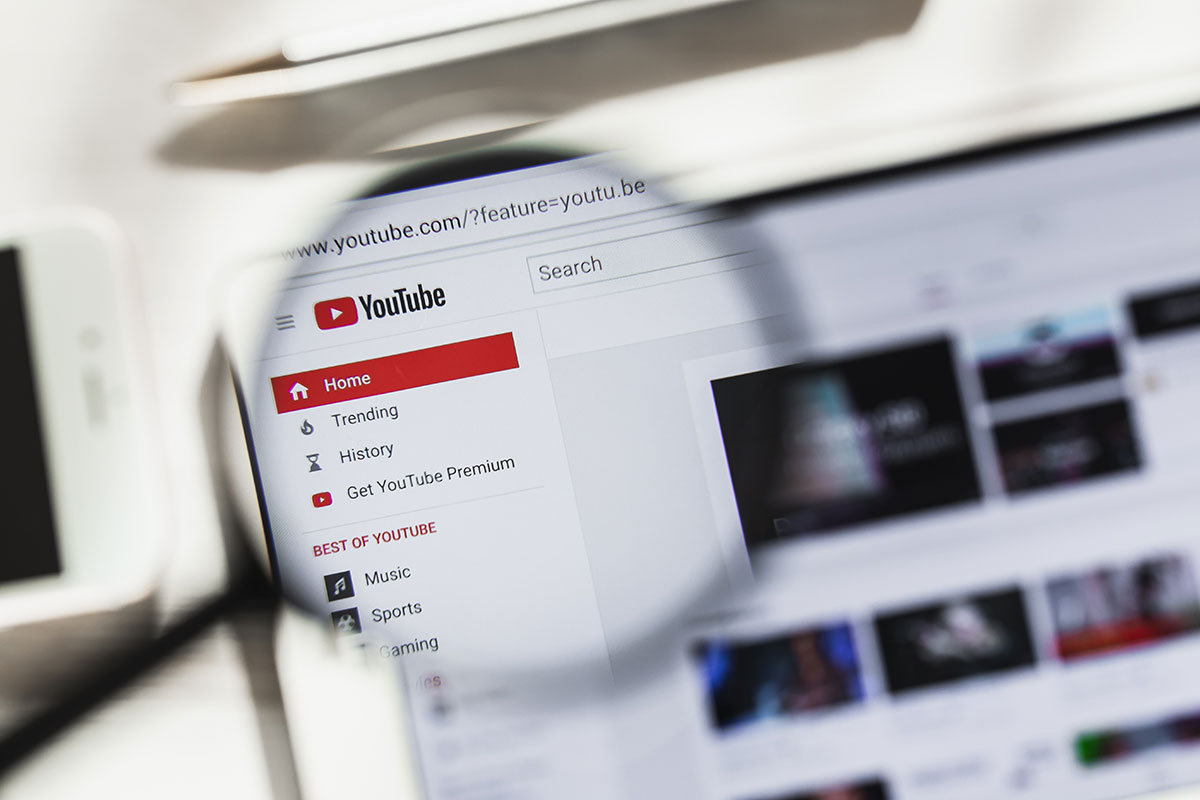Video marketing has become an essential tool for marketing professionals in every industry. Whether you’re trying to promote your business, generate ad revenue, or grow your personal brand, creating video content makes it possible.
The average person consumes 16 hours of online video per week. Research also suggests that viewers retain about 95% of information when they watch a video, compared to just 10% when reading text.
That’s not all. 84% of marketers have used videos to generate leads, and 84% of consumers have made a purchase after watching an explainer video.
But here’s the kicker. Your video content is useless if nobody sees it, and that’s where YouTube optimization comes into play.
This guide will help you rank higher on YouTube, get more organic video views, and ultimately generate better results for your video goals.
What is YouTube SEO?
YouTube SEO is the process of optimizing videos and channels to improve search rankings for various keywords. So when someone searches YouTube for a phrase or term that’s related to your content, your video will appear high in search results—improving your chances of getting more views.
When most people hear “SEO,” they automatically think of Google. YouTube SEO is the same concept.
But instead of optimizing your website landing pages and blogs to rank higher for organic Google searches, you’ll be optimizing your video content to rank higher on YouTube.
The strategies and ranking factors vary between traditional SEO and YouTube SEO, but the concept is identical.
Why You Need to Optimize YouTube Videos For Organic Search
So, why YouTube? With dozens, if not hundreds of different online platforms for sharing video content, lots of people wonder why YouTube SEO is the most important.
YouTube is the second most popular website in the world.
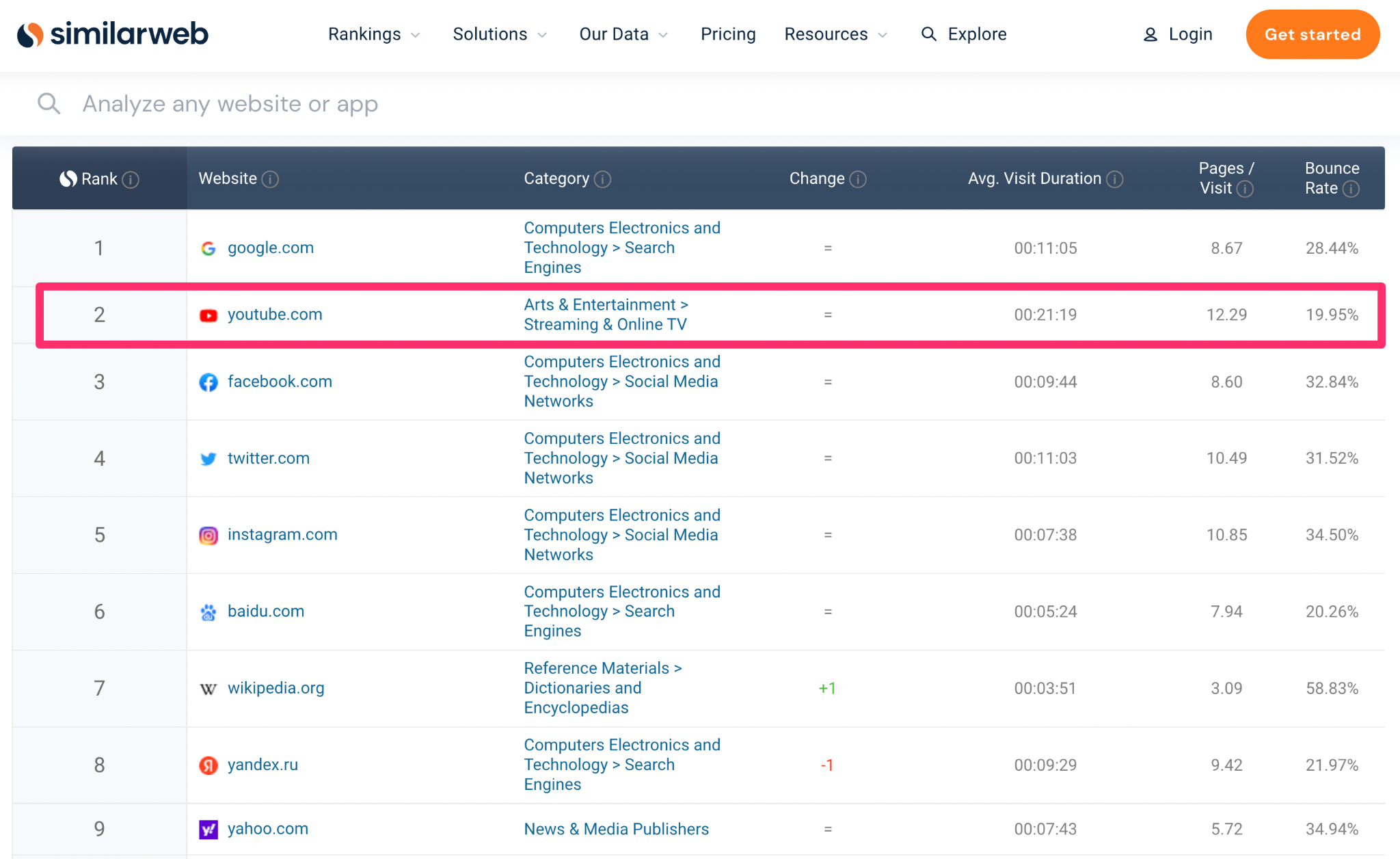
With more than 122 million daily visitors, only Google gets more traffic than YouTube. 85% of internet users in the US visit YouTube at least once per week.
But YouTube is more than just a high-traffic site. It’s also a search engine.
Just like Google, YouTube’s entire existence is based on how it serves up content to its users. When people search for something, they expect the results to be highly relevant and beneficial.
YouTube has an algorithm that determines how videos get ranked. When you understand how the algorithm works and what the engine looks for when it’s ranking content, you can adjust your videos accordingly to appease the algorithm.
Here’s something else to consider—Google owns YouTube.
So when you optimize your content for YouTube, you’re killing two birds with one stone in the sense that you’re also giving those videos a chance to rank on Google.
Here’s an example of the video results displayed in an organic Google search:
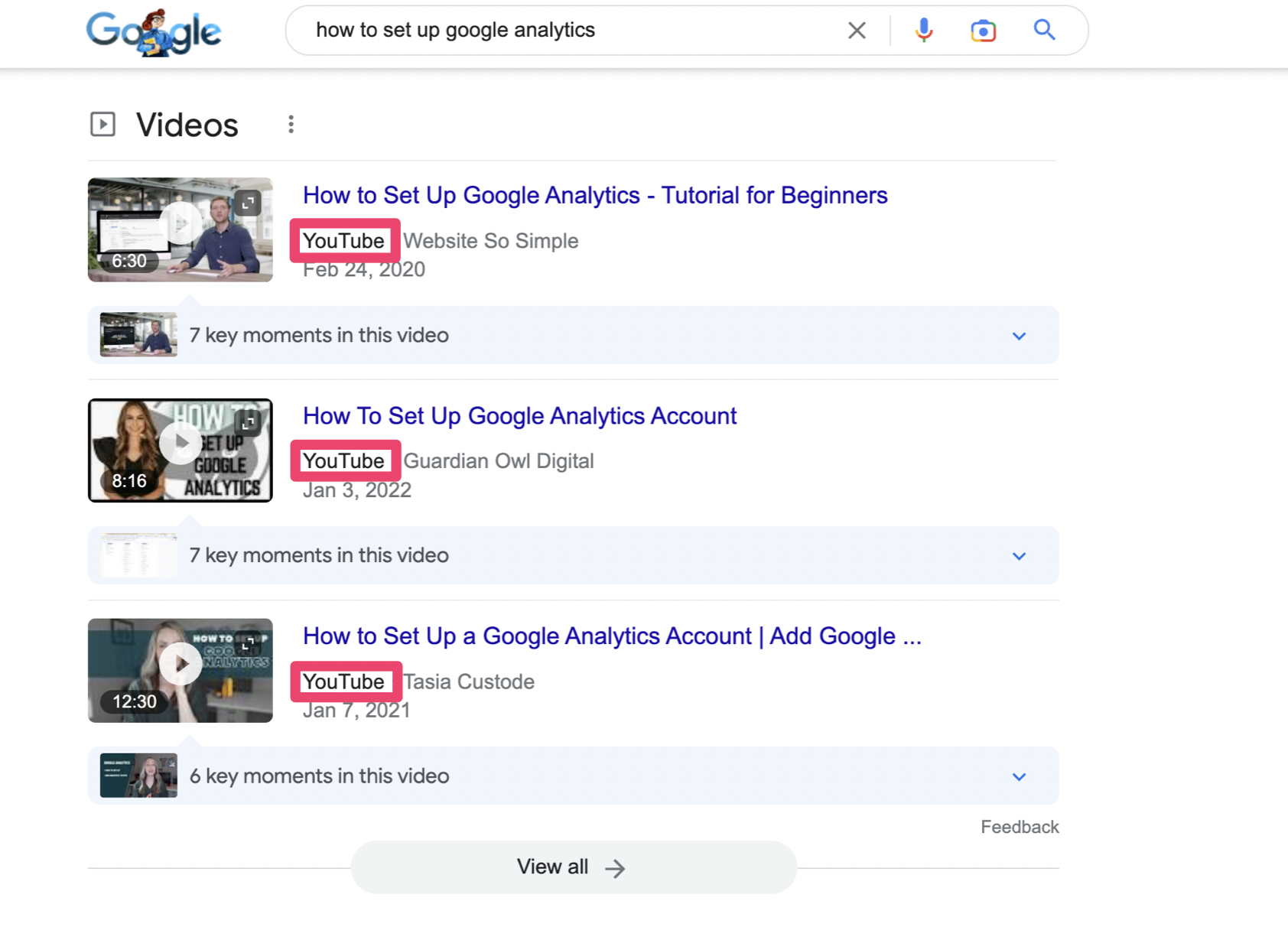
As you can see, all of the videos that ranked high in the SERPs came from YouTube.
Technically, videos from any website, social site, or video platform could rank here. But it seems like Google tends to favor YouTube videos—which makes sense since they own the platform.
If you’re not taking the time to optimize your YouTube videos, you’re simply going to get outranked by other videos that are. Solid YouTube SEO practices are a necessity for anyone who wants more organic views on their YouTube content.
Proven Strategies to Increase YouTube Rankings and Visibility
Follow the tips and best practices below to improve your organic YouTube rankings. These methods will help you get more views and clicks on your YouTube videos.
Start With High-Quality Keyword Research
Similar to traditional SEO, your organic search strategy on YouTube must begin with keyword research. Every video should have a list of target keywords that you’re trying to rank for, and your channel can also have a list of related keywords that you’re trying to rank for.
There are lots of different approaches to consider here. But having a keyword research tool as a resource will make your life much easier.
Ahrefs has a YouTube Keyword Tool that’s excellent, and it’s also an all-in-one SEO platform.
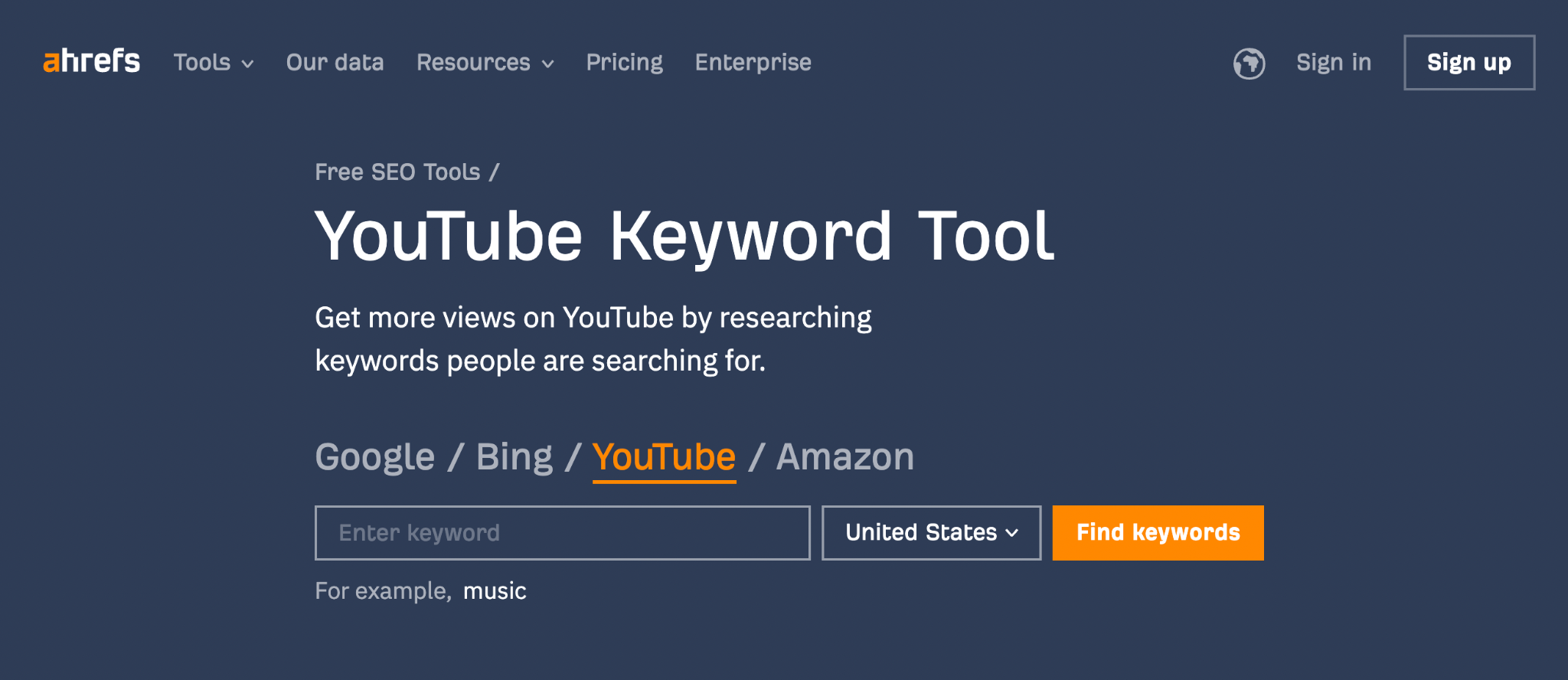
KeywordTool.io, TubeBuddy and vidIQ are more options. But regardless of the tool you’re using, these are the three main things you should consider:
- Search volume
- Difficulty
- Related keywords and questions
You want to make sure that whatever keyword you’re trying to rank for is actually worth it. If it’s only getting five or ten searches per month, it probably isn’t worth your time. With that said, keywords getting 100,000+ searches are likely too competitive and may not always be highly relevant to audiences.
Here’s a simple example using “soccer” as the keyword on Ahrefs.
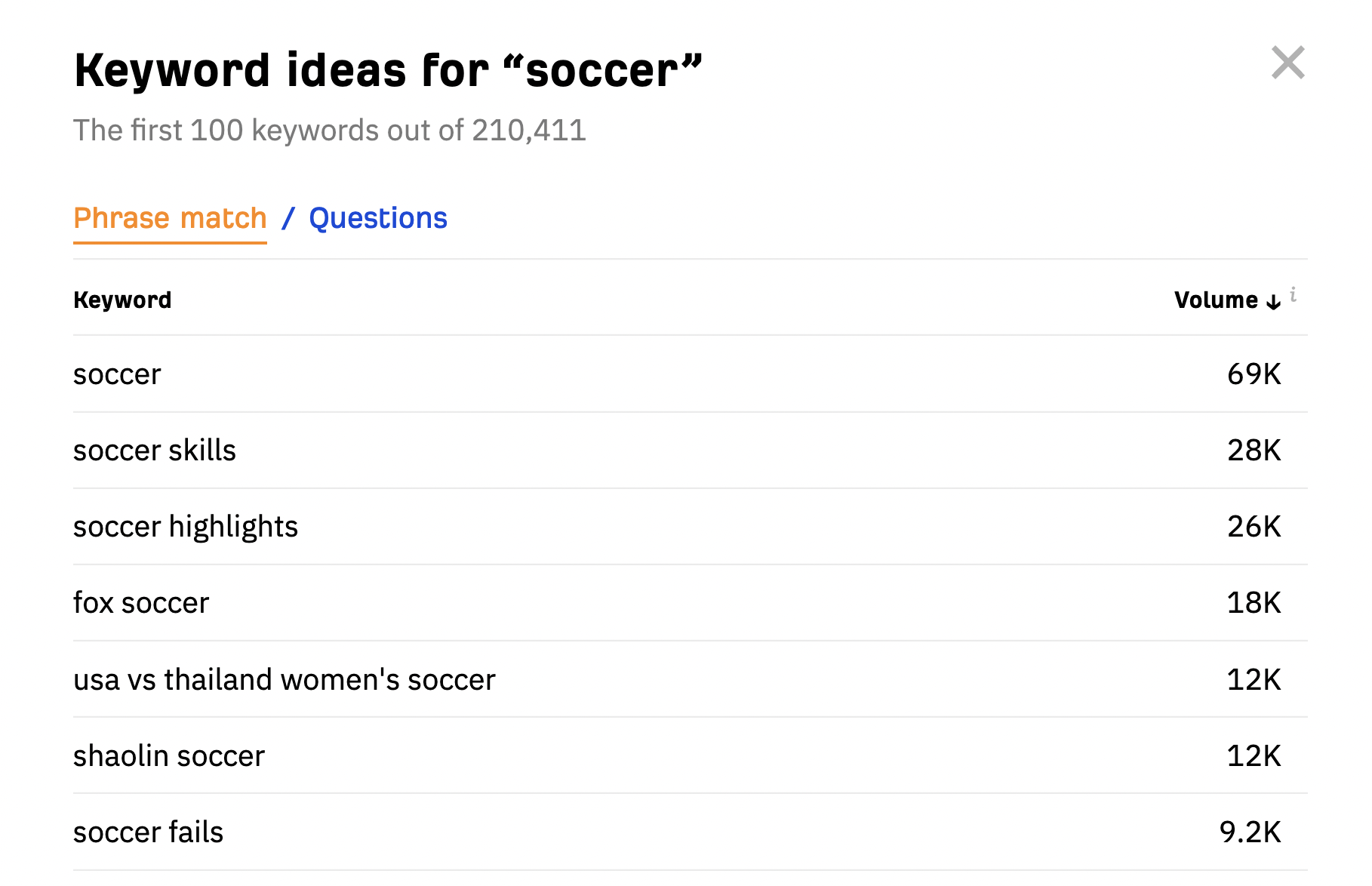
”Soccer” alone has 69k searches per month. But “Soccer Skills” has 28k searches.
Now if I navigate to the “Questions” tab, I’ll see even more keyword ideas based on my original query:
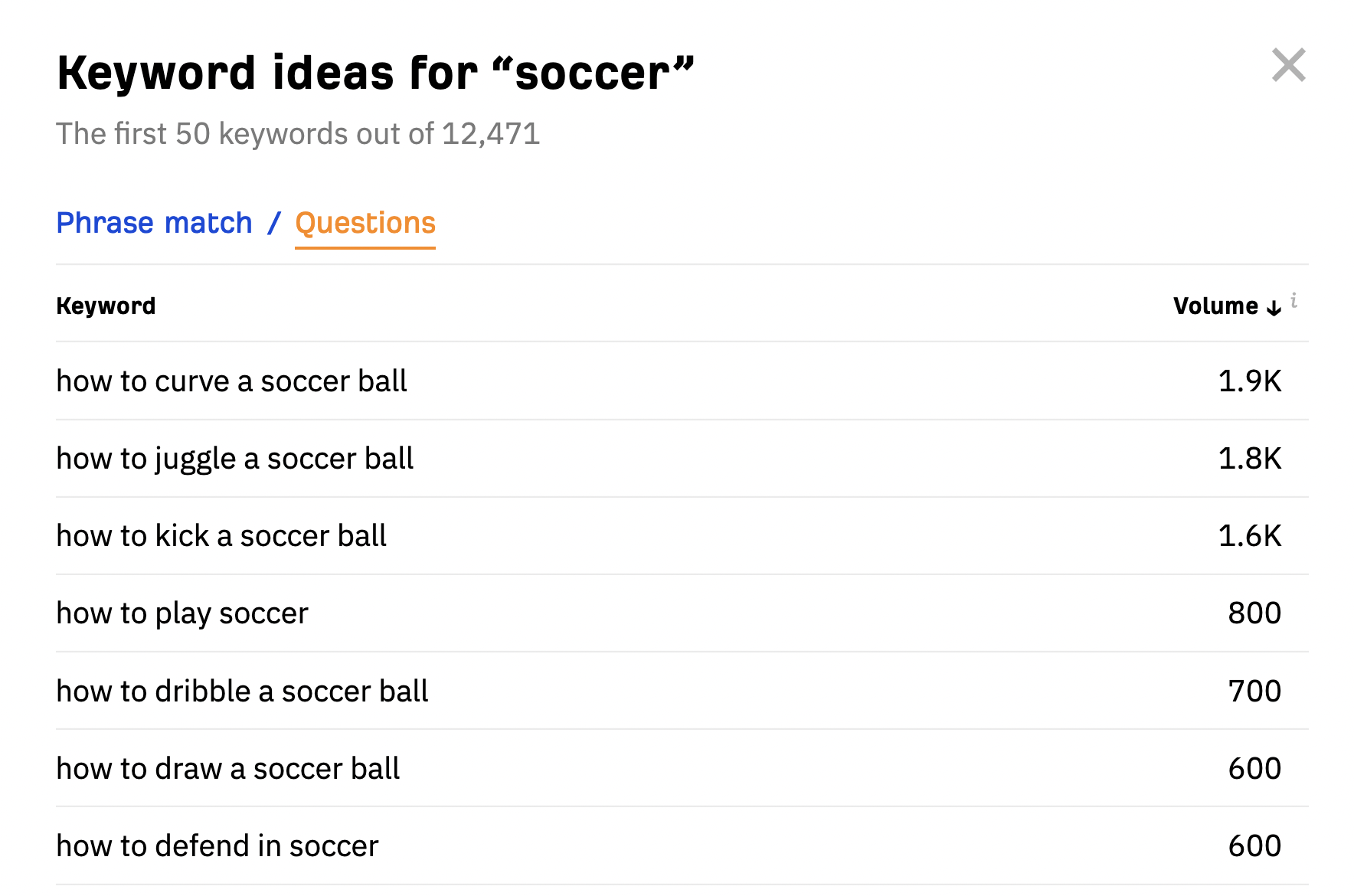
These have a lower search volume, but they’re highly relevant. People searching for these terms will be looking for something specific, and it gives your content a higher chance to rank.
Between the phrase match and question suggestions, you could create an entire series of videos based on “Soccer Skills.”
- Soccer Skills: How to Curve a Soccer Ball
- Soccer Skills: How to Juggle a Soccer Ball
- Soccer Skills: How to Kick a Soccer Ball
- Etc.
Every keyword tool will be slightly different, but the same concept applies to all of them. You’re trying to narrow your target keywords down to ones that are attainable, relevant, and easier to rank for.
Always Include Keywords in Your Title, Video File, and Description
Once you’ve identified the target keyword for a given video, make sure you use that keyword in your video file before uploading it to YouTube.
While YouTube’s algorithm is highly sophisticated, it doesn’t actually watch a video in its entirety to determine relevance. But YouTube does have the ability to view your file name.
The keyword should also be inserted naturally into your title. This not only appeals to the search algorithm but it’s also meant to attract viewers who are searching for content.
YouTube lets you create a description that’s up to 1,000 characters. Just understand that most of your viewers aren’t here to read a long description.
So you can frontload the beginning of your descriptions with the most relevant information to the viewer and then use the rest of the description after the “show more” option to go deeper with your keywords. Just make sure you’re using keywords naturally to avoid keyword stuffing.
Use Tags and Categories That Are Relevant to the Video Topic
Tags and categories serve two purposes.
First, they let users know what your content is about. But secondly, and maybe more importantly, they also help tell YouTube what your content is all about.
This lets YouTube associate your videos with similar content, which could be suggested to viewers. Here’s an example from one of Brian Dean’s videos:
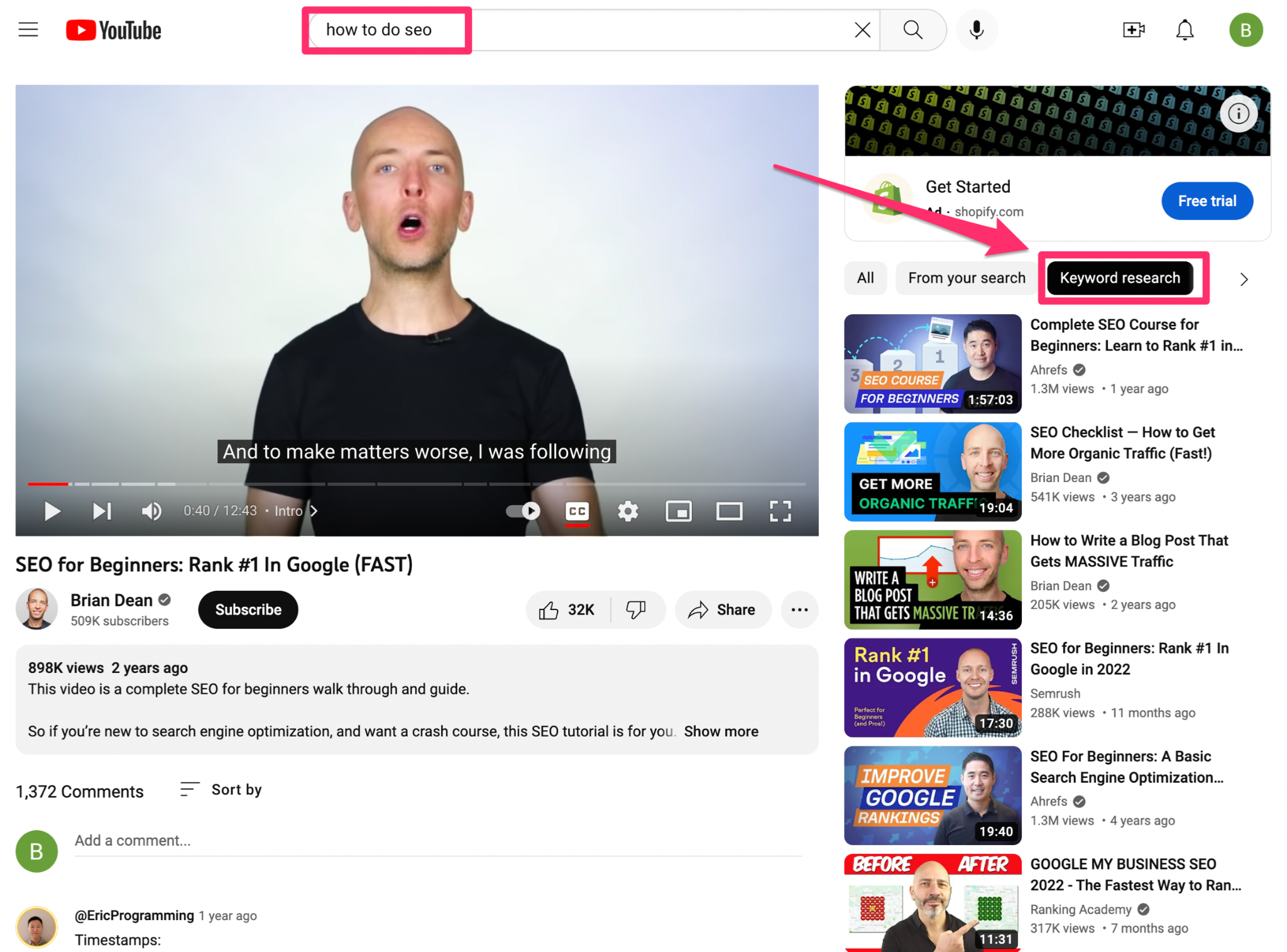
The search term is “how to do SEO,” and this video was the top result. But if you look on the right side, YouTube is suggesting similar videos based on the “keyword research” tag.
So even if you’re not the top result, you can still increase your visibility by appearing in suggested content.
Make sure you’re only using tags that are actually relevant to your video and channel. Otherwise, you could receive a penalty from YouTube.
Entice Viewers to Become a Subscribers
Getting more subscribers is important for YouTube SEO. First, your channel itself has the chance to rank on YouTube for a given search. So if you have lots of subscribers, it increases those chances.
Adding subscribers also tends to correlate with more views and more time watched on your videos—both of which impact your rankings.
So try to come up with creative CTAs in your videos that give viewers a reason to subscribe. This is a long-term strategy that won’t necessarily drive results overnight. But as your channel grows and your subscriber count increases, your search ranking should increase exponentially.
Don’t go overboard worrying about subscribers but it is a factor.
Add Custom Thumbnails to Increase Clicks
Custom thumbnails help you go beyond your titles, descriptions, and tags alone. This is an opportunity for you to stand out above other videos that appear in the search results.
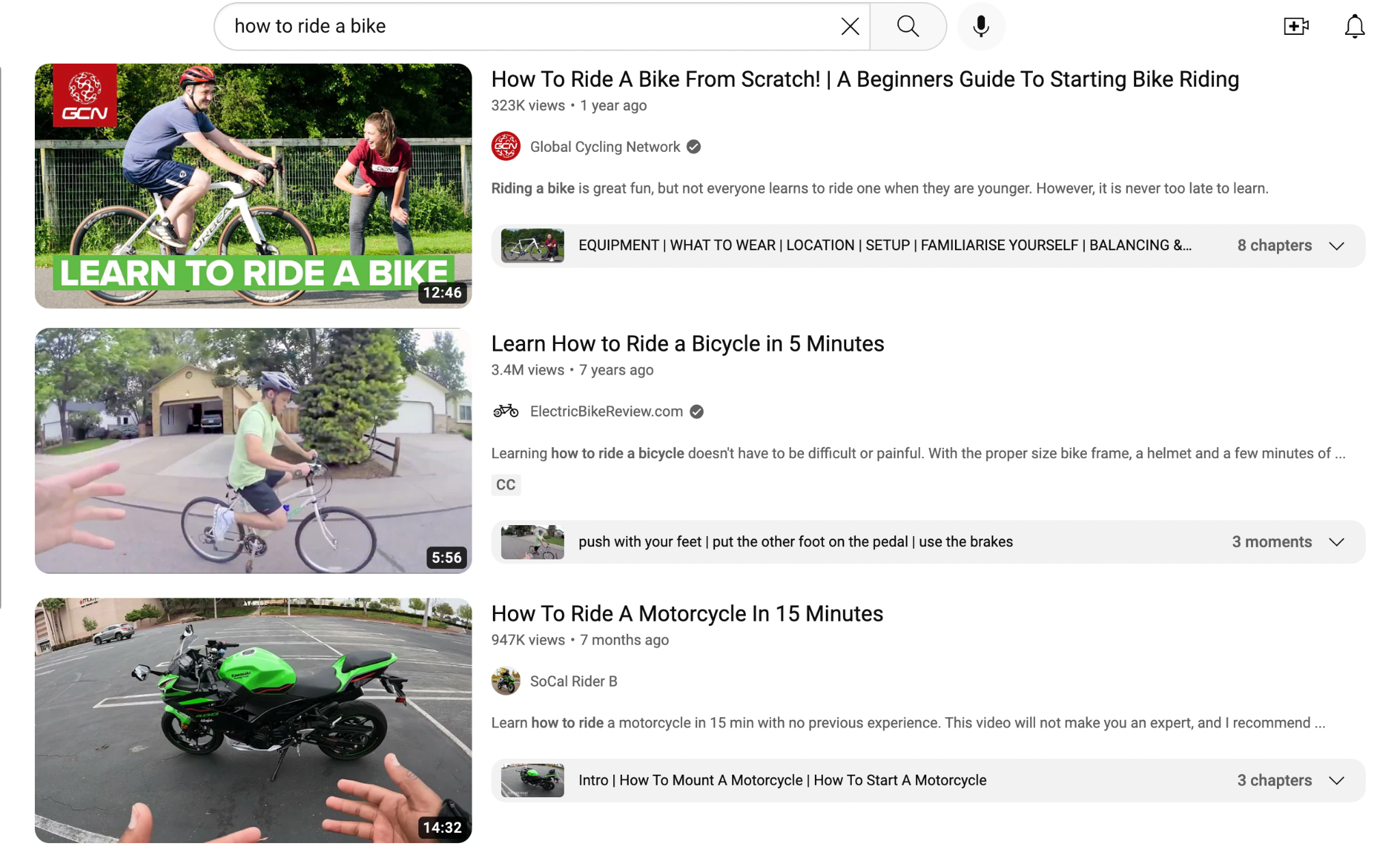
Which of the thumbnails above is the most appealing? It’s by far the first one.
The text on the thumbnail that says “Learn to Ride a Bike” doesn’t appear anywhere else in the title or description. In a way, this almost acts as a second title for the users to see, giving them more context about the video.
Include Subtitles and Closed Captioning
Let’s stick with the concept of more text on the screen. Adding subtitles and closed captioning is helpful for multiple reasons.
This process requires you to upload a transcript to YouTube, which gives the platform more context to what your video is about.
From a viewer’s perspective, captions help reach more viewers who might be hearing impaired. It can also accommodate people who are trying to watch videos in loud environments where they otherwise couldn’t hear.
Captions also work well for people who want to watch a video on mute if they’re in a setting where loud audio isn’t an option.
Create Playlists For Related Topics
Playlists are a great way to help you get more views and ensure people spend a long time watching videos on your channel.
Aside from the user benefits, it also tells YouTube that your channel heavily covers a topic within a specific category.
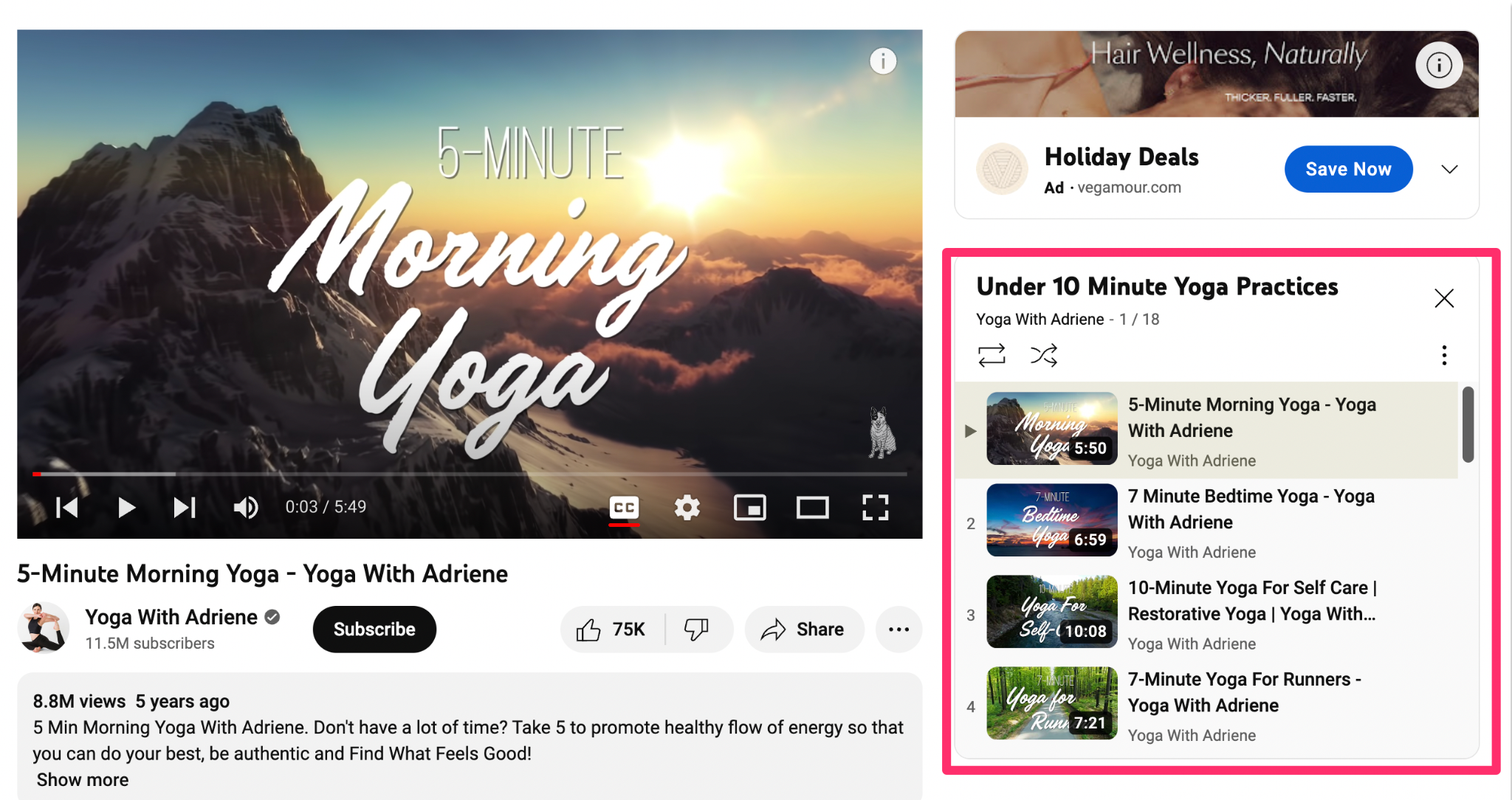
The example above is the first video of an 18-video playlist that covers yoga practices in under ten minutes.
Not only does this give viewers exactly what they’re looking for, but it also provides more context to YouTube. Even better, the suggested videos outside of the playlist are pushed down much further on the screen. So viewers are only seeing your content, which will autoplay by default when the video ends.
Final Thoughts
Organic YouTube optimization takes time. So don’t expect to see massive results tomorrow if you implement these practices today.
Start by going back and optimizing your existing content. From there, you can apply these concepts to all new videos uploaded to your YouTube channel.
Creating a workflow and process for SEO is crucial for success. Ideally, you should spend time on YouTube optimization every day. But if that’s not possible, allocate some time to work on this every week.
If you follow the tips in this guide, you should start to see higher rankings and improved results within the next three, six, or 12 months.

